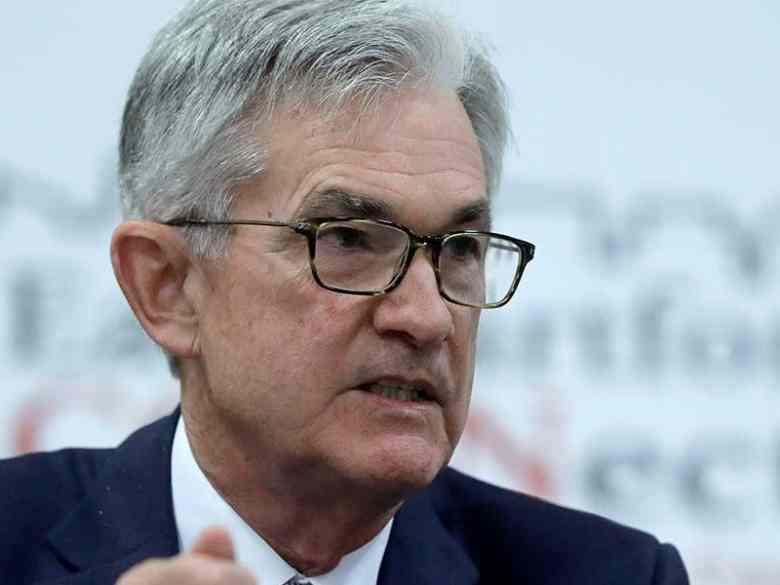The Dow Jones turned optimistic Wednesday after the Federal Reserve held its benchmark rate of interest regular and signaled it expects that maintain to final by way of 2020. Whereas Fed policymakers anticipate their subsequent transfer will likely be a price hike, they see it coming in 2021, quarterly financial projections confirmed. The largely dovish forecast ought to assist persuade Wall Road that the Fed is severe about getting inflation again to its 2% goal.
Dow Jones, Treasury Yield Response To Fed Assembly
The Dow Jones erased modest losses to shut up 0.1%. The S&P 500 rose 0.3% and Nasdaq composite gained 0.4%.
In the meantime, the 10-year Treasury yield, round 1.81% earlier than the Fed information, slipped to 1.79% throughout Fed chief Jerome Powell’s press convention.
Forward of the Fed assembly, monetary markets nonetheless had been pricing in about 60% odds of one other price reduce by the tip of 2020.
Federal Reserve policymakers turned the web page in October from their midcycle adjustment. After the third price reduce in as many conferences, they indicated that additional cuts would require pronounced financial weak point.
Since then, the Dow Jones has raced to a file excessive and squishy job market knowledge has turned robust. Now the query is what’s going to it take for the Fed to show the web page once more and start climbing charges.
The Fed started to reply that query on Wednesday. Powell stated he would need to see a “vital transfer up in inflation that is persistent” earlier than elevating rates of interest to counter the inflation menace.
Up to date projections present the Fed continues to see 2% GDP development subsequent 12 months because the jobless price holds at 3.5%.
New projections confirmed that none of 17 Federal Open Market Committee members anticipate the Fed to chop charges in 2020 under the present fed funds vary of 1.5%-1.75%. In the meantime, solely 4 committee members anticipate the fed funds price to finish subsequent 12 months above the present stage. By 2021, 12 of 17 policymakers anticipate a number of Fed price hikes.
If the Fed does find yourself climbing charges in 2020, it possible will not occur earlier than November’s assembly, which falls after the Nov. 3 election. However the coverage outlook will matter sooner for longer-term rates of interest that affect mortgage charges and auto lending phrases.
Any renewed Fed hawkishness — even when it stops wanting pre-election price hikes — may restrain financial development. That threat now seems decrease, with only a handful of Fed policymakers fretting that unfastened credit score situations and surging monetary markets may make the subsequent downturn extra extreme.
How Excessive Does Inflation Want To Go For A Charge Hike?
Fed policymakers see their favored gauge of inflation, the core private consumption expenditures worth index, rising 1.6% this 12 months, 1.9% in 2020 and a pair of% in 2021
Fed chief Powell received most committee members to again three price cuts by arguing that the extended undershoot of inflation risked a Japan-type state of affairs. The Fed has emphasised the symmetric nature of its inflation goal, indicating that above-target inflation just isn’t essentially a giant deal.
However simply how decided is the Fed to push inflation above 2%? Powell is seemingly extra dovish than most. For now, the Fed is penciling in 2021 price hikes, despite the fact that core PCE inflation is seen at 2% throughout that 12 months.
What’s The Subsequent Step For The Fed Stability Sheet?
On Oct. 11, the Fed stated it might begin rising its steadiness sheet for the primary time in 5 years, initially by $60 billion monthly. That is anticipated to proceed no less than by way of March.
Powell stated the cash market strains that prompted the Fed intervention had been now “subdued.”
“We’re ready to regulate our ways,” Powell stated. However no modified is deliberate.
In contrast to quantitative easing, or QE, launched on the finish of 2008 amid a monetary disaster, these purchases aren’t meant to decrease long-term rates of interest or enhance inventory costs. As an alternative of shopping for long-term bonds to stimulate development, the Fed is shopping for short-term Treasury payments for “purely technical” causes. Strains in cash markets had interfered with Fed efforts to middle its benchmark price throughout the goal vary.
The shift to increasing the Fed steadiness sheet got here simply two months after it had reduce quick its steadiness sheet contraction, generally known as quantitative tightening. QT, amongst different components, left financial institution reserves too low.
Now the Fed appears to have gotten management of its key rate of interest. But it is completed so with a good quantity of jury-rigging. The Fed steadiness sheet has grown by about $300 billion up to now two months.
The Fed insists it isn’t QE, however the burst of liquidity should be including some gasoline to monetary markets. The Dow absolutely would not thoughts extra of the identical.
